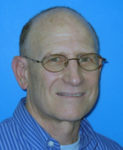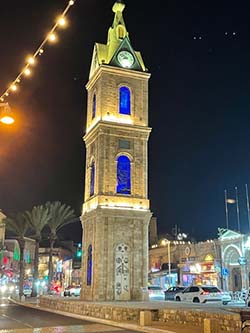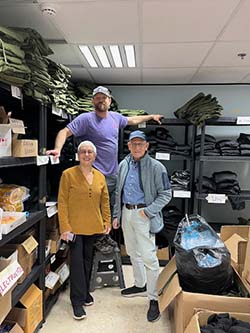Story and photos by Steve Kramer


KFAR SABA, Israel — During our older son Moshe’s recent visit of 10 days, we decided to spend two of them in Tel Aviv-Jaffa (Yafo). Of course we took the train from our local station, a 20-minute walk from our apartment. But to arrive at the closest station to our hotel, we switched on the way to Tel Aviv from the train to the light rail system, which offers many more stops than the four train stations in Tel Aviv.
We had booked two rooms at the Market House, one of the 13 small, boutique-style hotels in Tel Aviv-Jaffa operated by the Atlas Hotel chain. There are now many small hotel chains in our big cities and tourist destinations. We had passed by the Market House many times due to its central location. It’s located, “next to Jaffa’s historical Clock Tower and renowned flea market taking inspiration from the unique and authentic atmosphere of ancient Jaffa. The glass floor in the lobby exposes the city’s glorious history with archeological remnants of an 8th century Byzantine chapel. The hotel’s design is inspired by the nearby flea market, with elements and artwork that exude Oriental [Middle Eastern] charm. The hotel boasts 44 rooms that fit into the vibrant beat of the city, many with balconies overlooking the market and Mediterranean Sea.”
The commanding Clock Tower, which is a stone’s throw from the light rail stop, was built in in 1900 in “Palestine” by the Ottoman Sultan, Abdul Hamid II. His purpose was to celebrate the 25th anniversary of the sultan’s reign. Six of these clock towers were built in Palestine, among the stupendous total of about 100 throughout the Ottoman Empire. Just 18 years later, the Empire was dissolved after the defeat of the Central Powers (Germany, Austria-Hungary, Bulgaria and the Ottoman Empire) in WW1. Austria-Hungary was another centuries-old empire that was terminated in that brutal war.
We’ve been to Jaffa many times in the 34 years we’ve lived in Israel, but I don’t recall ever exploring so many streets and byways on our own in this ancient city. It was founded in the 18th century BCE by the Canaanites. Later, Sea Peoples invaded the area in the 12th century BCE and a small Philistine population settled there. During the period of Israelite settlement in the 11th century BCE, members of the Tribe of Dan settled Jaffa and its environs. From the days of King Solomon until today, Jaffa has been the port serving the capital, Jerusalem. The famous Cedars of Lebanon which were used in the construction of the First Temple in Jerusalem were transported through this port!
In the days of the Kingdom of Judah (700–586 BCE), Jaffa continued to serve as a port city. It was conquered many times and had many different rulers. Its population was made up of peoples from the Eastern Mediterranean, today’s Balkan states, and Mesopotamia (Turkey). Notwithstanding that, there were always Jews among the diverse mix. After Israel’s War of independence, Jaffa was incorporated into the burgeoning city of Tel Aviv. Today it has a very mixed population of Jewish and Arab Israelis, with much of the area gentrified. It’s famous for its cobbled alleys, its flea market, its quaint shops, its many cafes, bars, and restaurants, and of course, its still-operating port.
We enjoyed a great lunch in a famous local / tourist spot just steps from the hotel. “Dr Shakshuka” was founded about 35 years ago. Unsurprisingly, shakshuka is its specialty: North African–style poached eggs in spicy tomato sauce. After several hours of exploring the many shops of all kinds in the neighborhood, we returned to the hotel to enjoy its excellent late afternoon happy hour(s) for hotel guests. Our friend Chaya joined us there.
One could easily make a dinner of the many dishes on offer (some guests appeared to do so), but we just drank wine and snacked. After a few hours we ventured into the now-busy streets, past many crowded cafes to a favorite restaurant, where we enjoyed the very reasonably-priced mixed drinks and the excellent food.
It may sound as if all we were doing was eating, which isn’t far from the truth. Throughout his entire visit Moshe was eating all his favorite Israeli specialties – shwarma or falafel in pita, malawach, humus, tahini, pickles, and more – which don’t exist in his location, Flagstaff, Arizona. The prodigious amount of walking we did took care of any worrisome calories. Of course, Moshe packed humus and pita in his suitcase to take back to Flagstaff.
We woke up the next day to a fabulous breakfast buffet in the hotel. It’s hard to compare one hotel to another in the breakfast category, but Market House stands out because of some unusual specialties and especially the fact that the hotel’s smaller capacity meant no fighting a crowd nor waiting in line for freshly brewed coffee. In all, we were quite pleased with our choice of hotel.
To avoid having to return to the hotel from central Tel Aviv late in the day to retrieve our luggage, we took our small carry-on bags with us. It wasn’t ideal dragging them along, but it beat going out of our way during late afternoon rush hour crowds. We enjoyed walking along Ben Yehuda Street and Dizengoff Street two of the main shopping and window-shopping streets of the city. Walking on the smaller streets between those two larger thoroughfares, we noted the many trees and even small pastoral areas in the Tel Aviv neighborhoods.

Moshe, living far away but well aware of the tribulations of war going on here, wanted to do some volunteer work to support the soldiers. Michal had arranged for us to spend several hours at Chamal (literally a situation room for a war effort) located at the Ichud Olam Synagogue in the center of Tel Aviv. There we joined other volunteers unpacking and storing clothes and supplies for Israeli soldiers stationed primarily in the north. During the colder months, they definitely are in need of warm clothing. Some of the many items for the soldiers that we unpacked and sorted were: gloves, socks, jackets, flashlights, sweat suits, ear warmers, and more. These are necessary because of the extremely large call-up of reserve soldiers, about 300,000, which is unprecedented. The whole country has pitched in to help with projects like this one, to prepare meals, or to volunteer in areas where employees, such as school teachers, have been called away to serve.
While we were unpacking, a soldier showed up who had been tasked by his commanding officer to pick up a large number of cartons, which Moshe and I dutifully brought out to his vehicle. After the supply center closed for the day, we headed over to “Hostage Square”, the large plaza in front of the Tel Aviv Museum of Art, where crowds have long gathered to support the families and friends of the captives. With a small number of captives being released weekly at this time, the square was somewhat deserted. But Moshe appreciated seeing the exhibits and photos much in evidence there, whether there were many other people or not.
Before leaving the city, we stopped at the Sarona Market, in an enclave which features rehabilitated homes from the site or from other locations. All of them are structures built by the German Templar movement, a strict Protestant group of the late 19th and early 20th century. They were a very industrious community, especially in the area of agriculture. But due to their fervent support for German aggression in WW1, they were expelled by the British from the Mandate for Palestine.
As is not uncommon today, Sarona was designed as a commercial and tourist center, and as such is quite successful. We wandered through the large market with stalls selling all types of culinary specialties, to eat there or to take home. We had our choice of cuisines and enjoyed a late lunch.
All that was left of our sojourn was a quick walk to the nearby train station and a short ride back home. The only mishap of our “trip” was the 5-minute delay of our train causing us to miss, by seconds, our connecting train to take us home to Kfar Saba. Other than the ensuing half-hour delay, we had a lovely time with Moshe in fascinating Tel Aviv-Yafo.
*
Steve Kramer is an American Israeli based in Kfar Saba, Israel.